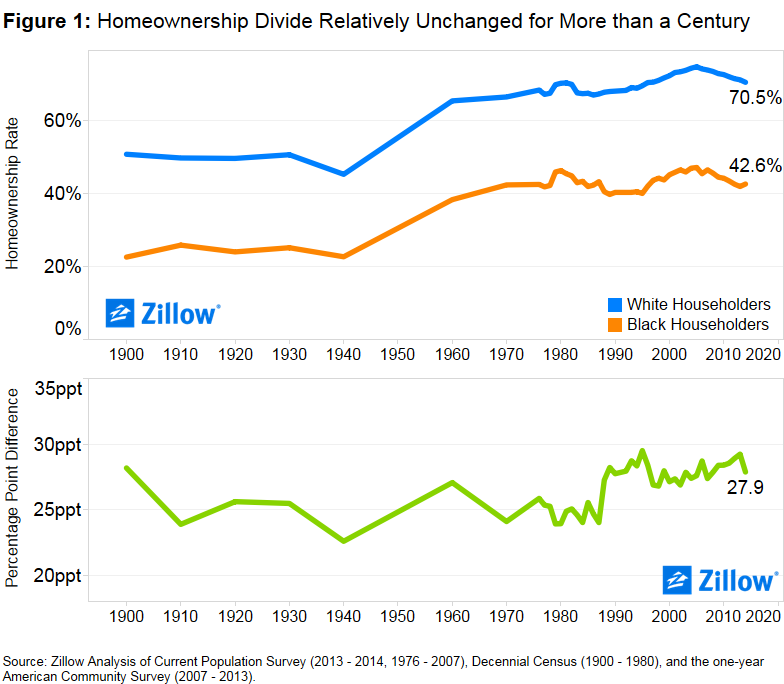- The difference in homeownership rates between black and white households is the same today as it was in 1900.
The racial divide in the United States is a tale as old as time. And remarkably, in terms of homeownership, that tale has been largely unchanged for more than a century.
To mark the beginning of Black History Month, we’ve taken a moment to look back at how far we’ve yet to come. The 28 percentage-point divide between white and black homeownership rates remains the same as in 1900. In 2014, the homeownership rate among white households was 70.5 percent; among black households, the homeownership rate is only 42.6 percent (figure 1).
For decades, policymakers have attempted to narrow this gap by focusing on the elimination of discriminatory practices. The Fair Housing Act, the Equal Credit Opportunity Act, the Community Reinvestment Act and the Home Mortgage Disclosure Act were all designed with this in mind. But housing policies aimed at reducing outright discrimination are not a magic bullet. Other demographic and economic trends affect a household’s likelihood to own its home, even before shopping for a home or heading to the bank for a mortgage. Differences in household incomes, employment histories, credit scores and marriage rates all impact homeownership – and all tend to be more favorable among white households[i].
There are many challenges on the road to a more equitable nation. And if the past is any indication, the road is not only very difficult, but also very long.
[i] The New York Times has done excellent research on the demographic and economic differences among blacks and whites: http://www.nytimes.com/2014/08/20/upshot/americas-racial-divide-charted.html?abt=0002&abg=1
